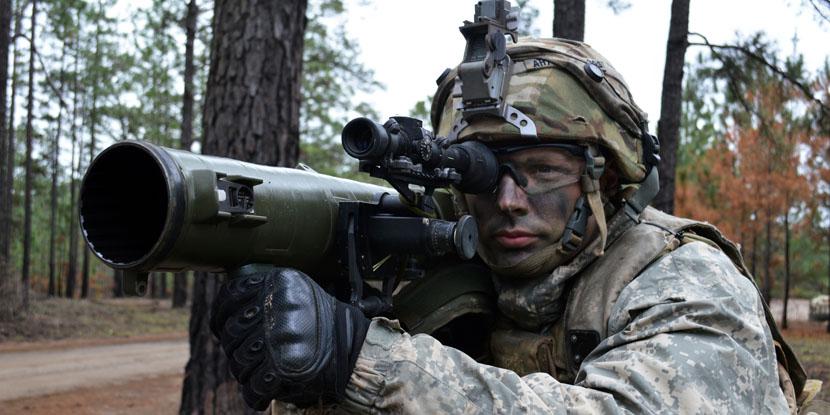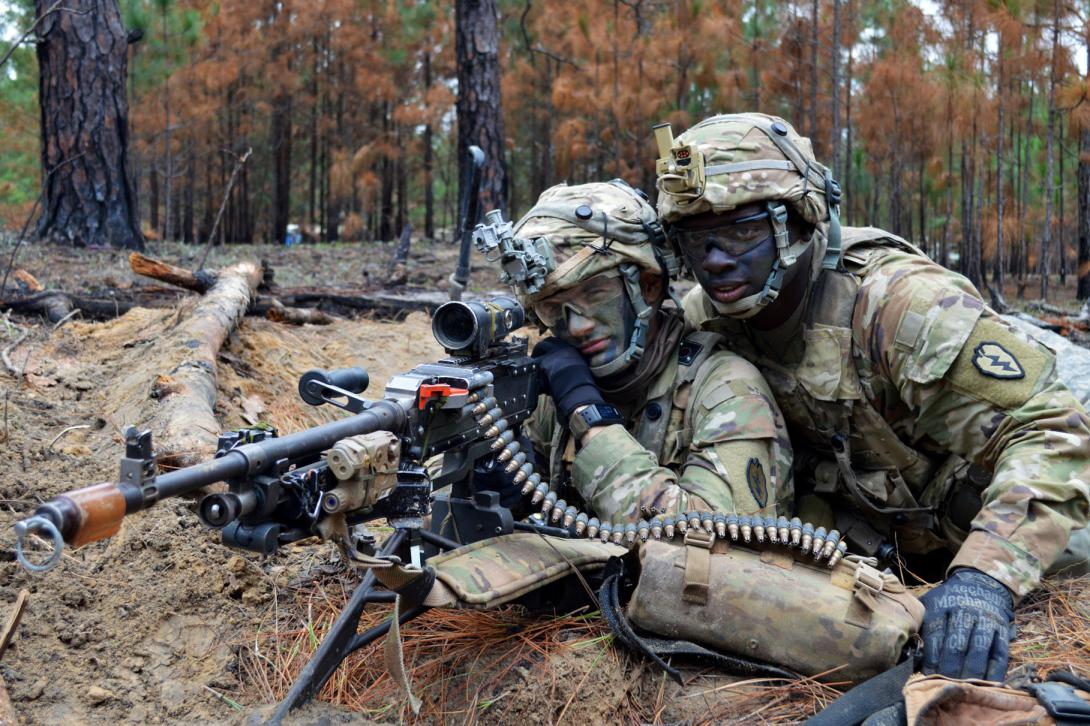Researching Technologies for Multidomain Battles
Army leaders have outlined the battlefield of tomorrow. It isn’t a static war, like the fight of the last 17 years in a counterinsurgency environment. The battle will involve smaller, more dispersed mobile Army teams operating in dense urban environments. Soldiers will have to manage in megacities, with hundreds of thousands or millions of people competing for the same electromagnetic spectrum, water, food and roads. The gear that they rely on for protection, as well as their own abilities to perform—their warfighter lethality—needs to reflect the demands of this future battlefield.
To improve lethality, Army Science and Technology is focusing on several key areas, including soldier and squad weapons; soldier protection and equipment; situational awareness; soldier-optimized performance; prolonged field medical care; and training, according to a recent report from the U.S. Army Acquisition Support Center, The Changing Face of Soldier Lethality. The report was prepared by two Army researchers, Karen Burke and Col. Eric Wagar, USA. Burke is the acting director of the soldier lethality portfolio, Office of the Deputy Assistant Secretary of the Army for Research and Technology (DASA R&T) and program analyst, U.S. Army Research, Development and Engineering Command. Col. Wagar is the director of the DASA R&T Office of the Deputy for Medical Systems and the medical portfolio director.
“Soldiers will operate with shorter lines of sight and a reduced standoff advantage in their intelligence, surveillance and reconnaissance and long-range strike capabilities,” the researchers stated. “Soldiers will face large, culturally diverse populations of noncombatants with whom they will need to communicate and who they will have to monitor for threats and protect from engagements, particularly in increasingly crowded urban regions such as coastal cities. Dense electromagnetic environments also will make it difficult to establish and maintain persistent, trusted communication links.”
Army Science and Technology (S&T) has the responsibility to modernize the service’s legacy weapons ammunition and accessories. However, the researchers warned that any improved weapons would be competing against adversaries that employ partial and full defilade, which protects their adversarial positions and equipment and limits the Army’s effectiveness under small arms direct fire and indirect fire systems. To combat this threat, the Army will invest in research into lighter-weight materials, enhanced ammunition design and penetration, modular component designs and integrated enabling technologies, including fire controls, optics and powered rails. Army researchers will work to reduce the accuracy, size and weight of these adversarial counter-defilade capabilities. The researchers also will develop counter-defilade for Army soldiers and small units, alongside more lethal weapons.
As emerging directed-energy and ballistic threats increase, and the need to improve warfighter protection increases, the Army will examine bio-enabled and protective materials for clothing and equipment. Researchers will also look into so-called signature management technologies that reduce the probability of a warfighter “being seen and heard because of the thermal, electromagnetic or visual characteristics of the gear they wear and carry,” the report noted.
However, increasing a soldier’s protection and improving equipment “boils down to a weight race,” the report stated. “The Army adds equipment to the soldier kit faster than it can reduce weight through materials research, miniaturizing components and integrating capabilities into ergonomically designed systems and components.”
Examination of lower-weight protection options will include efforts to reduce battery-related loads, such as research on power harvesting, battery chemistries and energy management. The goal here, the researchers said, is to be able to extend dismounted soldier operations for a 72-hour mission using adaptive systems that supply continuous power generation for up to six days.
Another research area is development of mechanisms to understand the human response and injury from blasts, ballistic weapons and directed-energy trauma. The Army S&T researchers will also create injury-based performance criteria to support readiness determinations and product design.
Regarding situational awareness, Army researchers will develop strategic technologies to improve soldiers’ abilities to outthink and outmaneuver in battle using soldier-wearable technologies. This includes investments in three areas: advanced sensors and displays for dismounts; soldier system interfaces and integration; and soldier data management.
“These tactical system interfaces and decision aids reduce the cognitive overload caused by too much visual information, and support the 3-D visualization of mission command and sensor data to enhance tactical decision-making during dismounted operations,” the researchers explained. “We are developing soldier-borne data management and distribution technologies whereby soldiers can assess and maintain situational awareness and understanding, to enable real-time decision-making during dismounted operations.”
For now, the Army’s research focus is on low-cost soldier-borne sensors, combat optical weapon sights, and imaging and non-imaging sensors for individual and crew-served applications. They are looking for the sensors to provide capabilities that enable precision targeting and pointing, target marking and designation, and obtain accurate target locations at extended ranges.
“Small units must have situational understanding and a common operating picture to operate in close contact with the enemy and to conduct continuous security operations,” the researchers stressed. “Emerging wearable technologies provide an unprecedented ability to collect high-resolution data continuously over significantly longer periods compared to the handheld and head-borne display systems in use today.”
Also, the Army’s research will look for state-of-the-art methodologies and tools to support the development of diverse warfighter skills. Here, investments in simulation and synthetic training environments will aim to increase retention, enhance situational awareness for cognitive overmatch, and improve warfighter and team performance while reducing training time and costs.
Additionally, the Army’s research addresses physical and cognitive performance through the service’s medical and human system integration communities. The research focuses on predicting the range of a soldier’s comprehension given varying quantities of information and tasks, in varying environments. Moreover, research on optimizing warfighter performance will look at the impacts of individualized regimens of nutrition, so-called “nutraceuticals,” pharmaceuticals and synthetic biology to prevent disease, speed recovery and augment human performance. The research will examine how warfighters can manage fatigue effectively, optimize nutrition and maximize physical and cognitive performance. In addition, to improve soldiers’ survivability, Army S&T is reviewing how to accelerate the delivery of lifesaving medical care, including during prolonged field care and autonomous evacuation.
When medical evacuation is not readily available, the Army aims to rely on autonomous ground or air platforms in conjunction with autonomous life support equipment. These autonomous solutions could also be used for resupplying medical personnel during sustained operations.
The researchers expect that the Army’s capabilities in advancing information technology and physical and cognitive augmentation technologies “will start to bear fruit” in three to 10 years, while it will take longer, “10 years or beyond,” for biomaterial and artificial intelligence technologies.






Comments